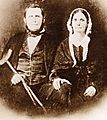Equality, Illinois facts for kids
Quick facts for kids
Equality, Illinois
|
|
|---|---|
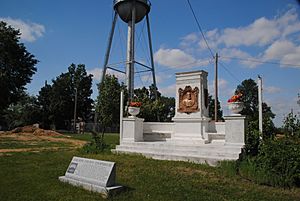
Monument honoring Michael Kelly Lawler on the former site of the Gallatin County Courthouse
|
|
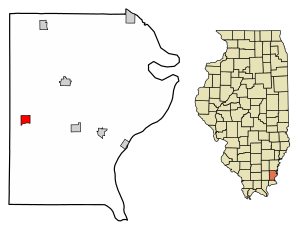
Location of Equality in Gallatin County, Illinois.
|
|
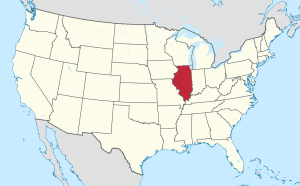
Location of Illinois in the United States
|
|
| Country | United States |
| State | Illinois |
| County | Gallatin |
| Area | |
| • Total | 0.90 sq mi (2.33 km2) |
| • Land | 0.88 sq mi (2.27 km2) |
| • Water | 0.02 sq mi (0.05 km2) |
| Elevation | 427 ft (130 m) |
| Population
(2020)
|
|
| • Total | 539 |
| • Density | 614.60/sq mi (237.19/km2) |
| Time zone | UTC-6 (CST) |
| • Summer (DST) | UTC-5 (CDT) |
| ZIP Code(s) |
62934
|
| Area code(s) | 618 |
| FIPS code | 17-24348 |
| GNIS ID | 2398838 |
Equality is a small village located in Gallatin County, Illinois, United States. In 2020, about 539 people lived there.
Near Equality, you can find interesting places like the Crenshaw House and the beautiful Garden of the Gods Wilderness. Equality was once the main town, or county seat, of Gallatin County from 1826 to 1851.
Contents
History of Equality
On January 26, 1826, Equality officially became the county seat of Gallatin County. A courthouse was built in 1827. This building was used for court cases until 1851. After that, it served as a school, church, and meeting place. Sadly, it was destroyed by fire in 1894.
Salt Production in Equality
Long ago, even before European settlers arrived, Native Americans made salt near Equality. Later, French settlers also started extracting salt here around 1735.
In 1803, the U.S. government took over these "Great Salt Springs" from the Native Americans. The government would then let people use the springs to make salt. They had to produce a certain amount of salt each year. These salt-making areas were known as the "United States Saline."
Isaac White was in charge of the salt works in 1811. He later joined the Indiana Militia and died in the Battle of Tippecanoe.
During this time, special laws allowed the use of enslaved people to work at these salt mines. The 1820 census for Gallatin County showed 239 enslaved people or servants. Their forced labor was important for producing salt.
In the 1820s, Gallatin County was much larger than it is today. It included what is now Saline County. Because of this, the county seat was moved from Old Shawneetown to Equality in 1826. Equality was closer to the center of the larger county. It remained the county seat until Saline County was formed in 1847.
Around 1838, a local salt maker named John Hart Crenshaw built a large house called his manor house near Equality. This house was used in connection with the forced labor system of the time.
The Great Salt Springs are located southeast of Equality, near the Saline River. Another important salt-making spot, Half Moon Lick, is southwest of Equality.
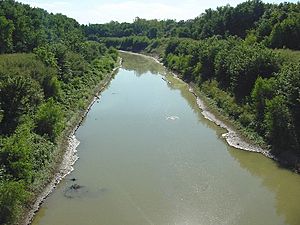
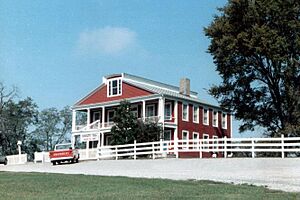
Geography of Equality
Equality is located in the western part of Gallatin County. It sits on the north side of the Saline River. This river flows southeast and eventually joins the Ohio River.
According to the 2010 census, Equality covers a total area of about 0.906 square miles (2.33 square kilometers). Most of this area, about 0.89 square miles (2.27 square kilometers), is land. A small part, about 0.016 square miles (0.05 square kilometers), is water.
Population Information
| Historical population | |||
|---|---|---|---|
| Census | Pop. | %± | |
| 1860 | 369 | — | |
| 1870 | 356 | −3.5% | |
| 1880 | 500 | 40.4% | |
| 1890 | 622 | 24.4% | |
| 1900 | 898 | 44.4% | |
| 1910 | 1,180 | 31.4% | |
| 1920 | 1,332 | 12.9% | |
| 1930 | 830 | −37.7% | |
| 1940 | 971 | 17.0% | |
| 1950 | 830 | −14.5% | |
| 1960 | 665 | −19.9% | |
| 1970 | 732 | 10.1% | |
| 1980 | 831 | 13.5% | |
| 1990 | 748 | −10.0% | |
| 2000 | 721 | −3.6% | |
| 2010 | 595 | −17.5% | |
| 2020 | 539 | −9.4% | |
| U.S. Decennial Census | |||
As of the 2020 census, there were 539 people living in Equality. There were 218 households in the village. About 27.5% of these households had children under 18 living with them.
Images for kids
See also
 In Spanish: Equality para niños
In Spanish: Equality para niños


